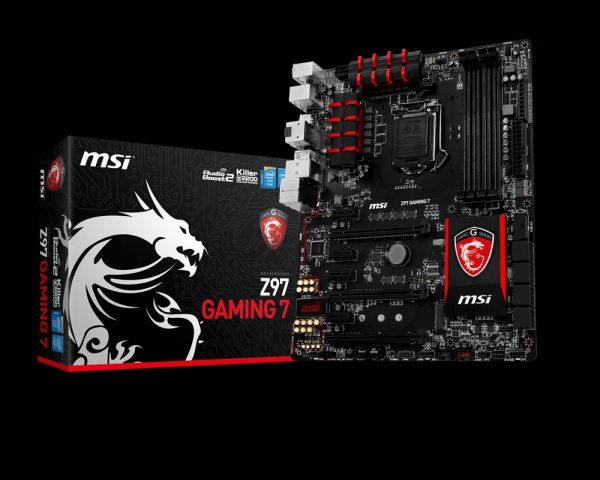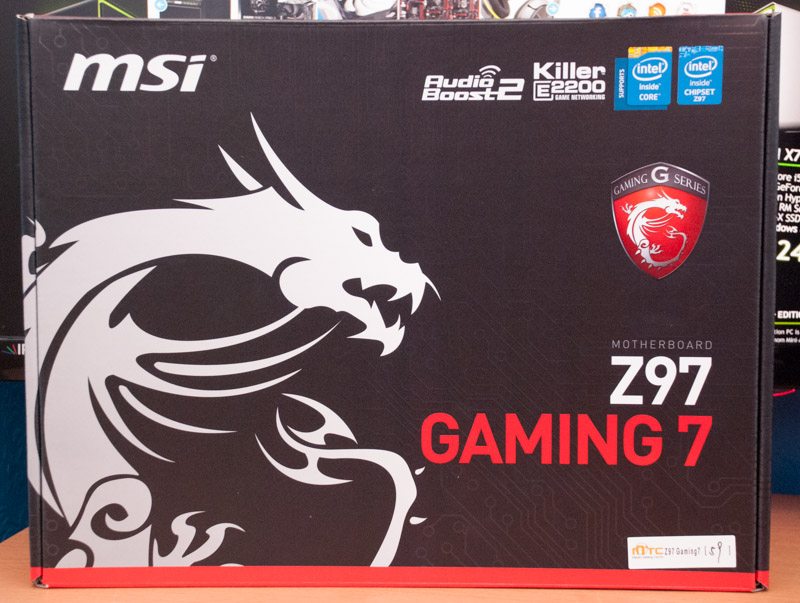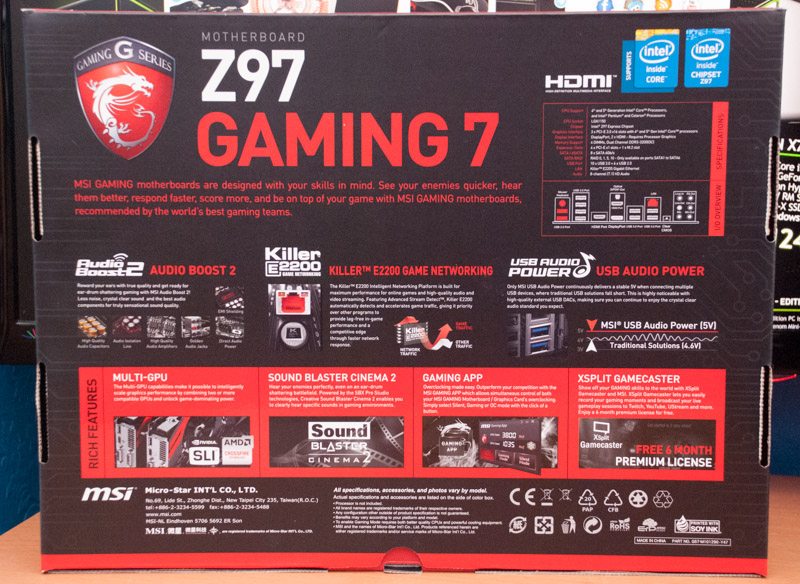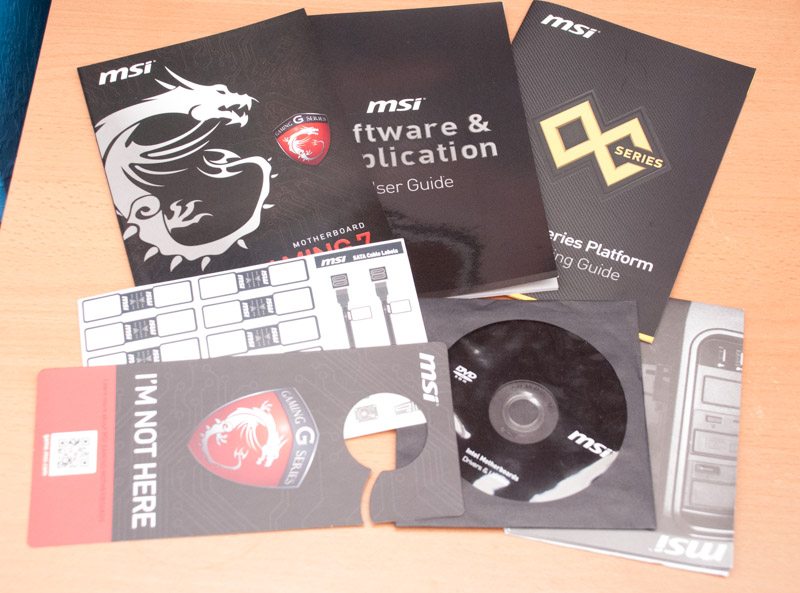MSI Z97 Gaming 7 (LGA 1150) Motherboard Review
Introduction, Specifications and Packaging

This beautiful looking creation from MSI is our second Z97 motherboard review for this launch day, in addition to the ASUS Z97-A we recently checked out. In contrast to the entry level ASUS Z97-A, the MSI Z97 Gaming 7 jumps straight to the other end of the spectrum and this is a really high end creation aimed specifically at meeting the needs of modern gamers. The MSI Z97 Gaming 7 has all the trademark styling of the MSI Gaming Series as well as the trademark features of a gaming motherboard: a dedicated high performance Gigabit NIC, a custom audio implementation and adequate room for plenty of GPUs to maximise those frame rates. The MSI Z97 Gaming 7 motherboard has a boatload of features: a 12 phase VRM, 8 SATA III ports, support for up to 3 way CrossFire, advanced ALC 1150 Realtek audio and a Killer E2205 Gigabit NIC. Those features mean this motherboard is sure to appeal to a large audience in the same way MSI’s Gaming Series graphics cards have done. With all that said you might expect the MSI Z97 Gaming 7 to be a pricey option, but at just $190 or £140 this is probably the cheapest flagship gaming motherboard I’ve ever seen…so let’s see what it has to offer!

Packaging and Accessories
As expected the packaging continues to the MSI Gaming Series theme, the two standout features are of course the Killer E2200 NIC and the up-market audio implementation.

The back of the box gives us a closer look at the features of this motherboard but we invite you to check out the product page if you’re interested in reading more.

The bundle is fairly dense with a user manual, software and application guide, overclocking guide, driver and utility DVD, cable labels and a door hanger.

Furthermore, we get some MSI MConnectors for hooking up your front panel connectors, a padded and styled rear I/O shield, an MSI case badge/sticker, four SATA III cables, an SLI bridge, a power adapter (to convert molex into the audio power input) and voltage checkpoint cables.









